X3.1 solar flare from sunspot region 2192
Friday, 24 October 2014 22:00 UTC
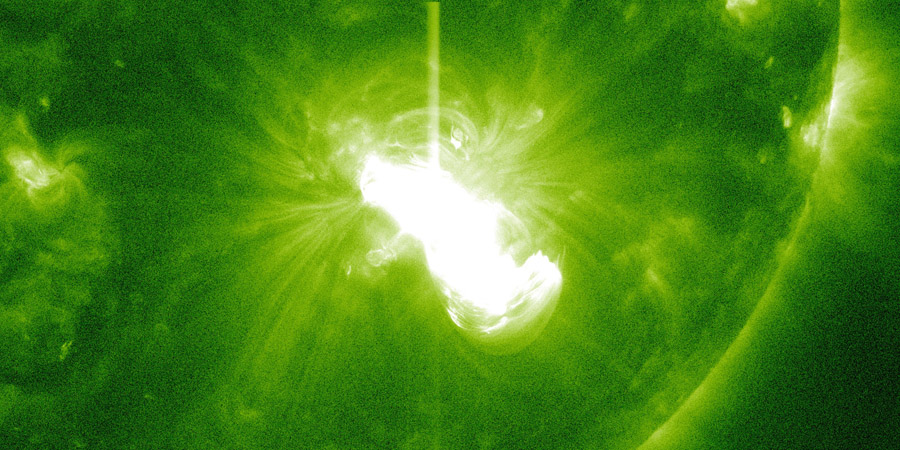
Sunspot region 2192 (now the largest sunspot region in 24 years) produced a major X3.19 solar flare (R3-strong radio blackout) at 21:41 UTC. This was the third and also the strongest X-class solar flare from this sunspot region and the sixth strongest solar flare of the current solar cycle.
Big Bear Solar Observatory GONG H-alpha
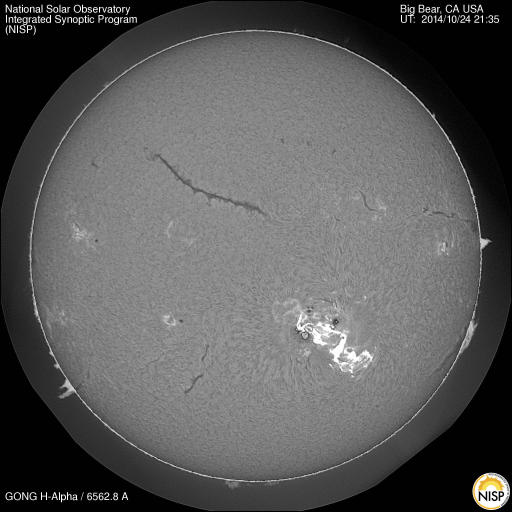
SDO/AIA 94 Ångström
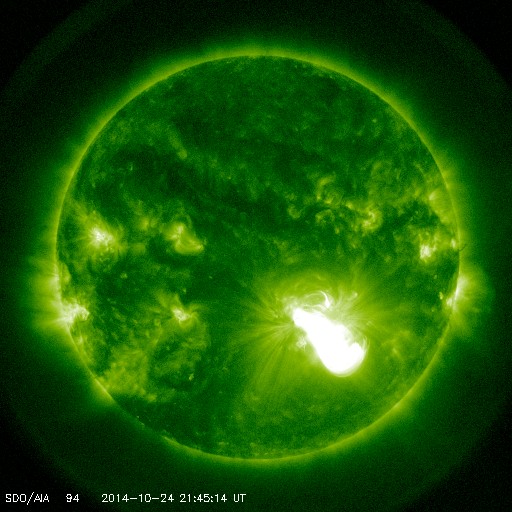
SDO/AIA 131 Ångström
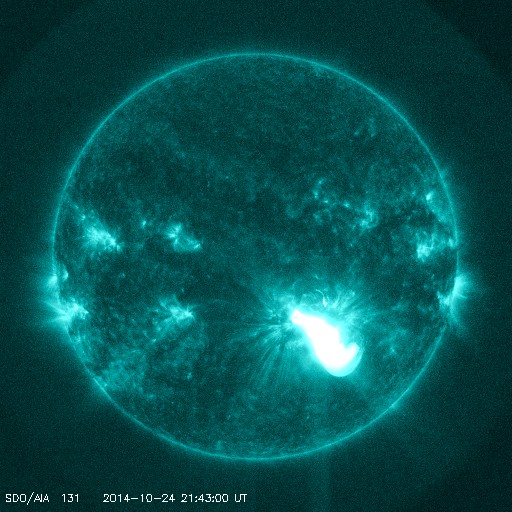
SDO/AIA 193 Ångström
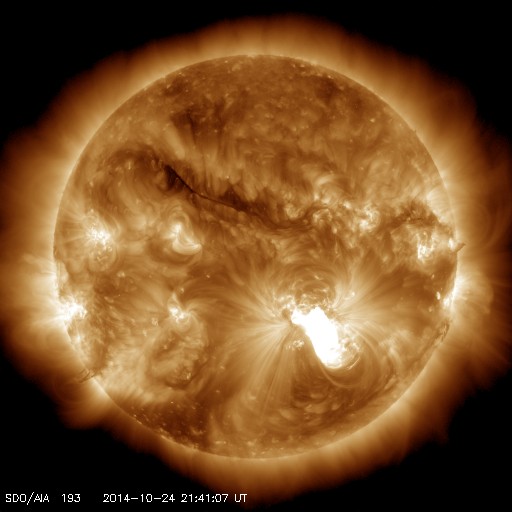
SDO/AIA 304 Ångström
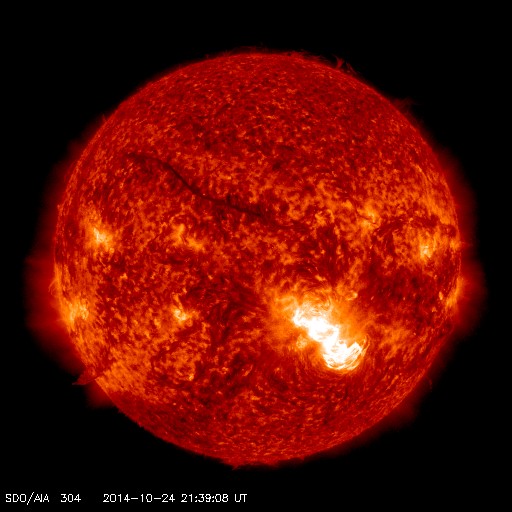
SDO/AIA 1600 Ångström and SDO/HMI overlay
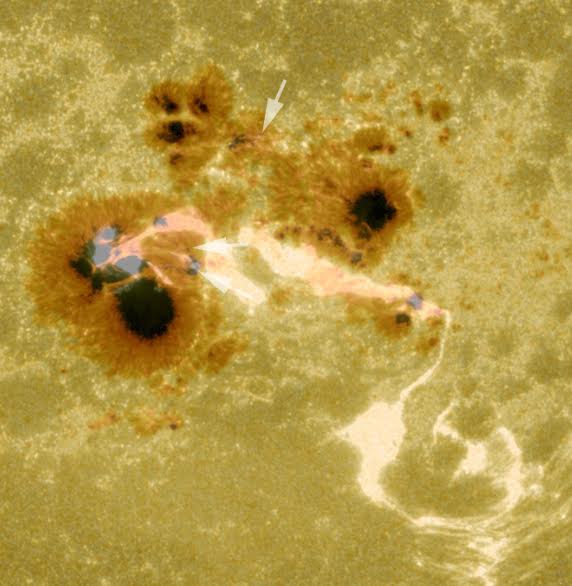
Coronagraph imagery is not yet available to confirm the launch of a coronal mass ejection but the lack of any significant coronal dimming (traces in the solar corona of ejected material) suggests there might not be a major coronal mass ejection associated with this event despite the long duration of the solar flare. This solar flare looks pretty similar to the previous X-class solar flares that also failed to launch a coronal mass ejection.
The magnetic loops holding this group together just do not want to break and release a coronal mass ejection it seems, just like all other previous solar flares (excluding today's M-class solar flare) also failed to produce coronal mass ejections. This is a shame as sunspot region 2192 is now in a great position for any eruptions to be earth-directed but we do need to wait for coronagraph imagery from SOHO to be 100% sure that there is again no or only a minor coronal mass ejection. This post will be updated as soon as more information becomes available so keep checking back.
Be sure to also check out our other update that we posted today.
NOAA SWPC alerts
ALERT: X-Ray Flux exceeded M5 Threshold Reached: 2014 Oct 24 2113 UTC NOAA Scale: R2 - Moderate
SUMMARY: X-ray Event exceeded X1 Begin Time: 2014 Oct 24 2107 UTC Maximum Time: 2014 Oct 24 2141 UTC End Time: 2014 Oct 24 2213 UTC X-ray Class: X3.1 Optical Class: 3b Location: S12W22 NOAA Scale: R3 - Strong
No coronal mass ejection confirmation (ADDED: 23:00 UTC)
Here is the latest coronagraph image from SOHO/LASCO C2 showing... nothing.
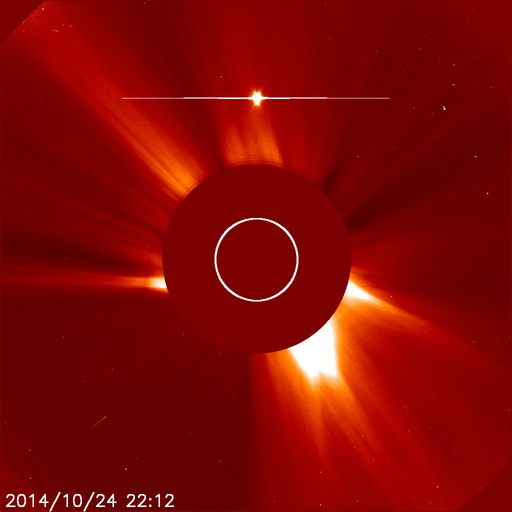
As expected, the X3.1 solar flare is not eruptive and no coronal mass ejection was launched. Sad news for aurora lovers around the world but it is how it is!
Images: NASA SDO and ESA/NASA SOHO.
Thank you for reading this article! Did you have any trouble with the technical terms used in this article? Our help section is the place to be where you can find in-depth articles, a FAQ and a list with common abbreviations. Still puzzled? Just post on our forum where we will help you the best we can!
Latest news
Latest forum messages
Support SpaceWeatherLive.com!
A lot of people come to SpaceWeatherLive to follow the Sun's activity or if there is aurora to be seen, but with more traffic comes higher server costs. Consider a donation if you enjoy SpaceWeatherLive so we can keep the website online!

Space weather facts
| Last X-flare | 2025/03/28 | X1.1 |
| Last M-flare | 2025/04/18 | M4.4 |
| Last geomagnetic storm | 2025/04/16 | Kp8- (G4) |
| Spotless days | |
|---|---|
| Last spotless day | 2022/06/08 |
| Monthly mean Sunspot Number | |
|---|---|
| March 2025 | 134.2 -20.4 |
| April 2025 | 120.1 -14.1 |
| Last 30 days | 116.4 -25.9 |


